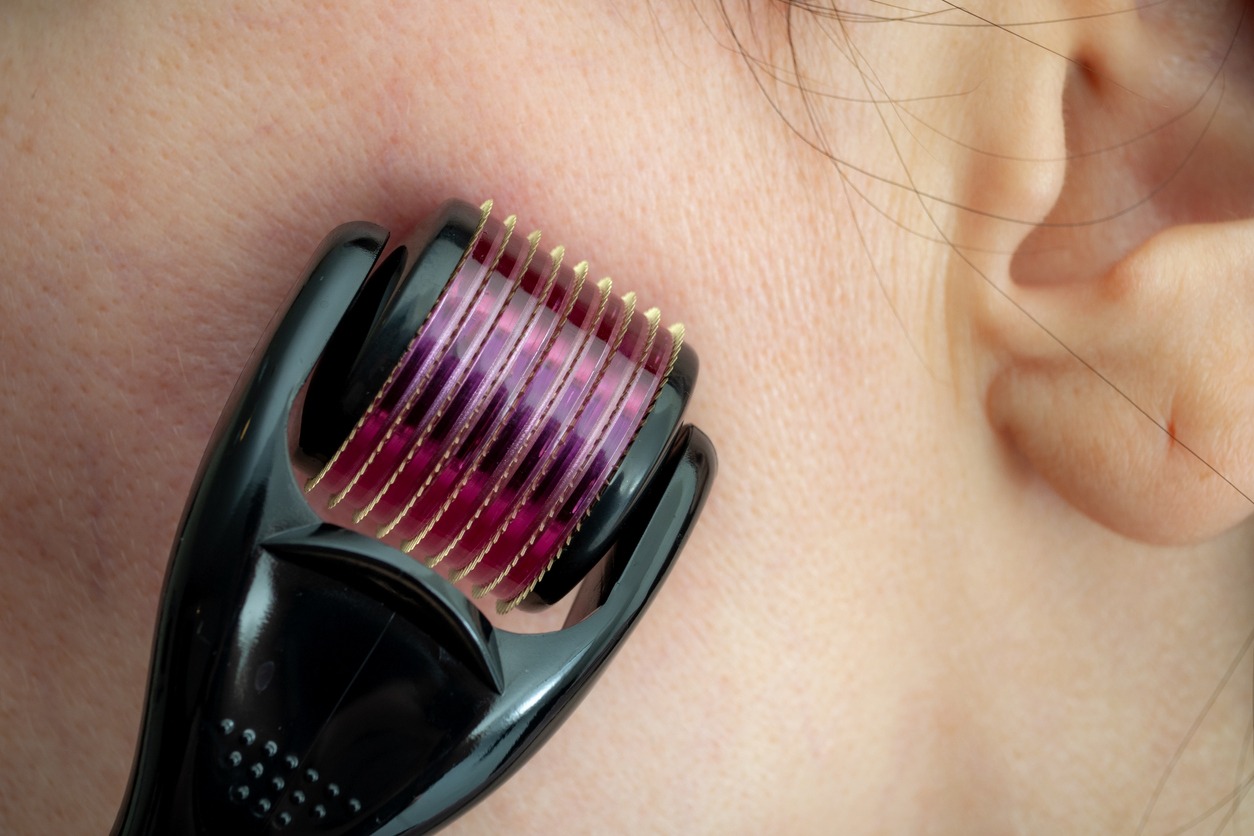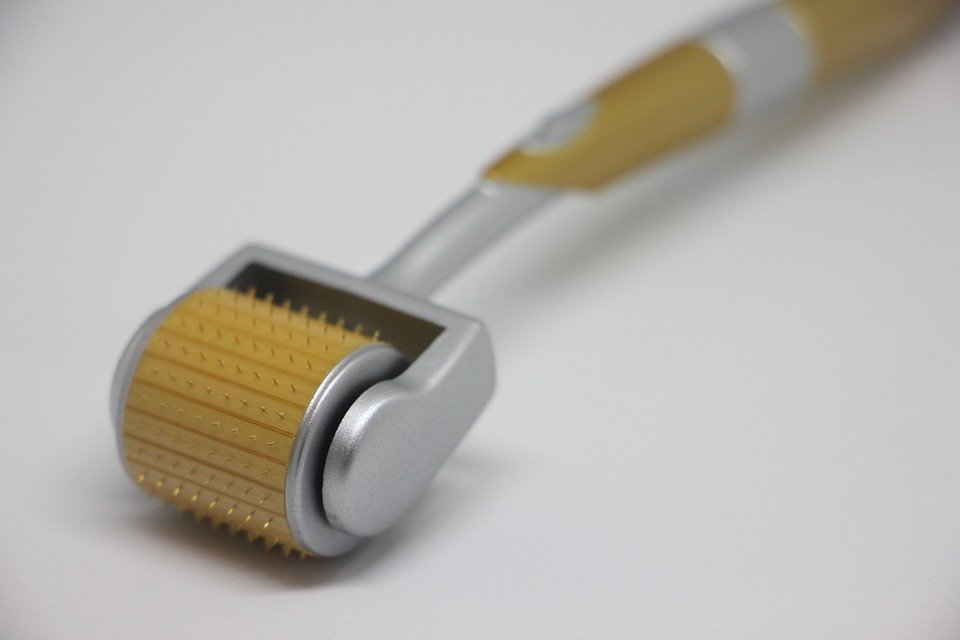The derma roller is truly a revolutionary tool for skin care and overall aesthetic medicine treatment. Many people who have tried the derma roller have sworn by this tool and its effectiveness in bringing back the youthful-looking skin that they have dreamed about.
One of the big reasons why derma rolling treatment is popular is that it can be done in the comfort of one’s home.
A derma roller is a device that is equipped with microneedles. These microneedles are either made of titanium or stainless steel. They are intended for the micro-penetration of the face and body. There are a variety of needle sizes – from as short as 0.2 mm to as long as 2.0 mm and above. For the derma rolling to be effective and bringing out the desired results, there should be an appropriate needle length for a certain part of a body or for a particular skin condition.
Of course, there’s the original DermarollerTM which is exclusively used by professionals. And there are a variety of derma rollers for home use – some of them are almost as good as the original Dermaroller, while some of them are cheap knockoffs. Check out the link “How to Spot a Fake Dr. Roller” to ensure that you don’t end up purchasing a cheap and inferior imitation.

How does the derma roller work on the skin?
For using a derma roller safely at home, it is recommended to use needles with a maximum length of 0.5 mm for the face and 1 mm for the body, for reasons of safety of the treatment.
During the derma rolling treatment, the microneedles penetrate and create tiny holes in the epidermis (the skin’s outermost layer) without damaging it.
Microneedling encourages the release of growth factors that activate fibroblasts, which increase the production of new collagen and elastin. In addition, new epidermal cells increase exponentially about five days after the treatment and last up to eight weeks.
Finally, there’s the formation of a new tissue which lasts from eight weeks to one year. In addition to the stimulation of new proteins like collagen and elastin, microneutralization significantly increases the absorption of active substances contained in cosmetic creams or gels.
A five to six treatment cycle should be regularly performed every seven to ten days, and then every three to four weeks. The time intervals between rolling sessions are there for a reason: to allow the skin enough to repair and regenerate.
Application
People can safely use the derma roller at home for treating a variety of skin problems which include:
- Scars – Acne scars in the face and other parts of the body, as well as scars as a result of an illness (such as chicken pox), injury or surgery. The derma roller helps in unifying, reducing as well as eliminating scars and other skin defects.
- Stretch marks – The derma roller helps in evening out the coloring, brightening and reduce stretch marks. New, fresh and pink stretch marks in particular – usually occurring from the beginning up to six months – can benefit from the derma rolling treatment and see the results much sooner compared to older stretch marks.
- Discoloration – The derma roller is also helpful in reducing discoloration caused by acne marks and sunburn, accelerating skin regeneration and lightening the skin’s color. It also helps in reducing hyperpigmentation.
Active ingredients applied during the derma rolling procedure
It is not unusual for a lot of people to ask about the ingredients or solutions that are typically applied during a derma rolling treatment.
Before rolling: The usual active ingredients – such as hyaluronic acid, elastin, peptides, liposomal complexes, niacinamide or vitamin C – should be dissolved in the aqueous or water phase.
After rolling: The usual active ingredients – such as vitamin A, lipoic acid, vitamin C in oil form, squalene and other kinds of oils – should be dissolved in an oil phase. You can also apply a soothing cosmetic product or serum (which should contain allantoin, arginine or betaine).
Pure hyaluronic acid or pure collagen is usually applied to moisturize, smoothen and stimulate the skin. Pure vitamin C is quite popular because it helps in triggering collagen production, sealing blood vessels and evening out the skin tone.
Sometimes, people also prepare complex preparations which include algae, allantoin, coenzyme Q10, panthenol, vitamin E and wheat proteins.
Typical active ingredients applied during rolling include collagen, elastin, caffeine, and L-carnitine.
Check out the link “Complete Rolling Guide” if you need to look for a full guide to performing a safe derma rolling treatment at home.


